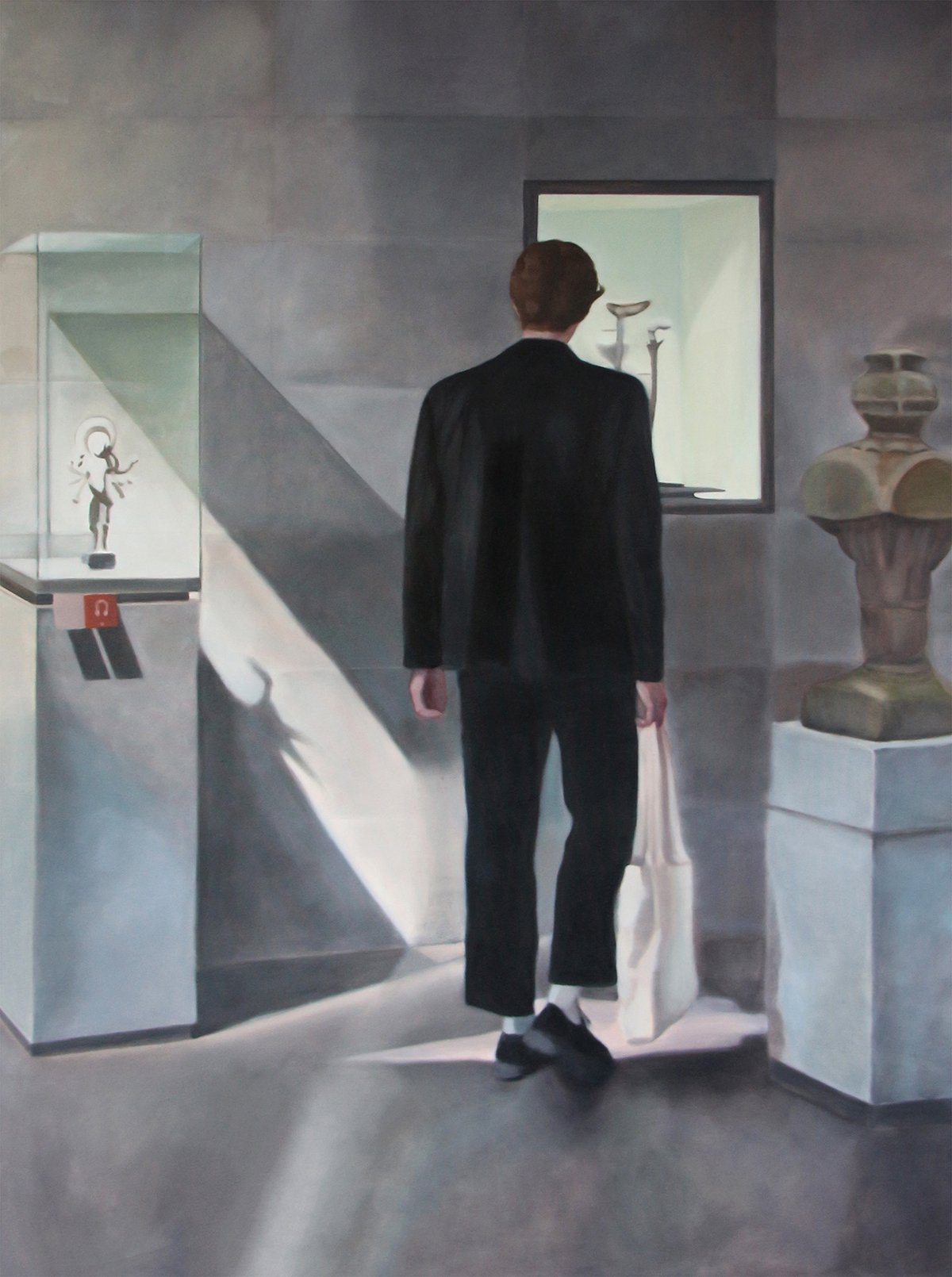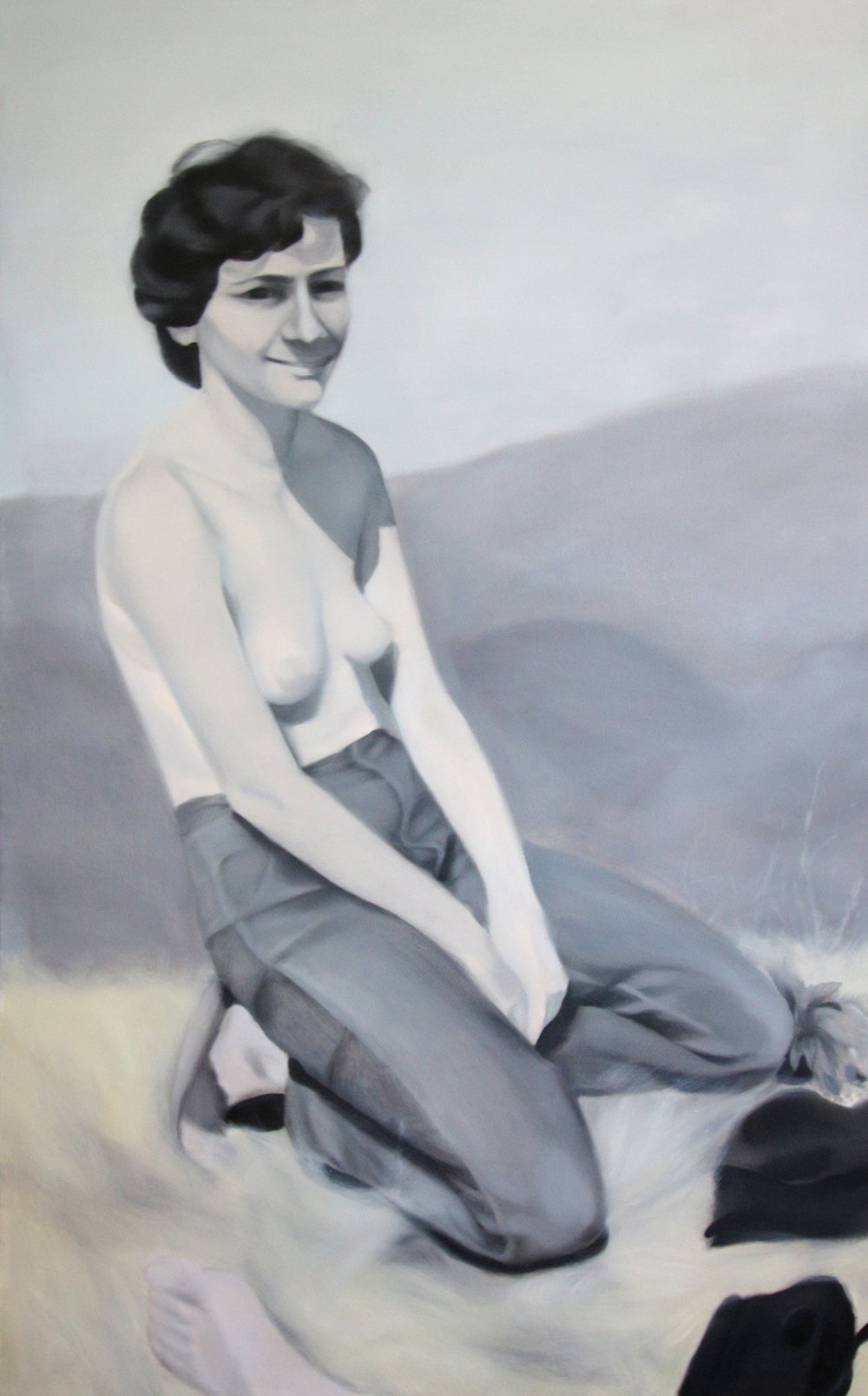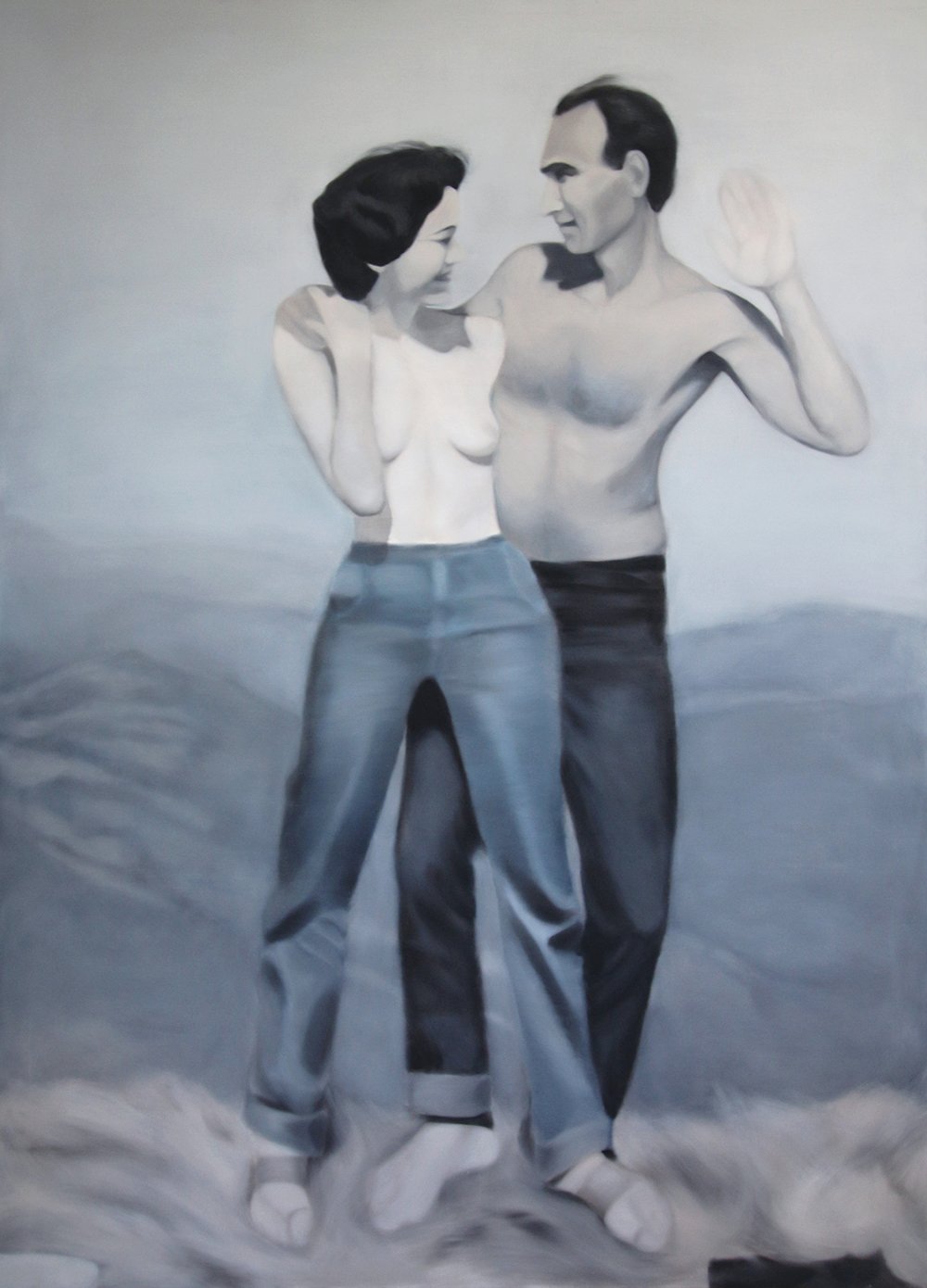Marija Šević
Marija Šević graduated from the Faculty of Fine Arts in Belgrade in 2011, where she received MA in painting. As a scholar of the French government, she resided at l'Ecole Nationale Supérieure des Beaux-Arts in Paris in the classes of professors Claude Closky and James Rielly. She is a co-founding member of U10 art space in Belgrade, working on managing exhibitions and events. Marija lives and works in Belgrade.
Hi Marija, thank you for taking the time to talk to us. I will start with the classic: how did you decide to become a painter? Was it a clear decision or was it more like “things just happened”?
Hello, thank you for having me! That actually happened during my preparatory course. While at high school for Design, textile department, I started to prepare for the Academy, and at first, I thought I will go into fashion. The preparation took place in the atelier of an amazing sculptor, Miroslav Babic, where we were practicing drawing and painting using a model and still life compositions. After seeing me paint and draw, Miroslav told me that I was born a painter hah, and that I should study Fine Arts. And actually, I didn’t hesitate at all, it truly felt like hearing something familiar, and I said, yes, you are right! That summer I enrolled in the Academy of Fine Arts in Belgrade.
How did the experience in Paris influence you? What are your most vivid memories from your studying and developing period?
It had a major influence, primarily since both, the National Museum and the Museum of contemporary art in Belgrade have been closed for quite some time, so we had no opportunity to be exposed to the contemporary art scene, in terms of local and international productions. And Paris on the other hand offered a pure abundance of museums and galleries, with the Académie des Beaux-Arts right outside Louvre making it that extra special, inspiring and magic. Working in the class of Claude Closky meant that we had not only to produce a new piece each week but to follow in with an exhibition and discussion. That dynamics was new for me, it was productive and different, and more contemporary approach than we had at the Academy in Belgrade.
Your works are very strong in the sense that they have and give the viewer a pure and direct emotional power. However, we often don’t see the faces of the persons you paint and you are usually not using bright screaming colors - we just feel the vibe (even though the screen). How do you do it and how did you develop your style?
Oh, thank you, I hope people feel the power you’re mentioning. Passing emotions on is the most satisfying. I aim to create sceneries that are immaculate, but at the same time blurred, which makes them dreamy… I like the idea of everyone projecting themselves into those particular situations, that’s why there are often people with a hidden identity. In the last, Museum series, the palette kind of changes, the colors become super strong and flashy, and I love that little twist that happens.
What is your last, Museum series, about? We see people as gallery/museum visitors, but now - as we look at your works - they are becoming objects. The observer is observed. But it's not only that, there is a connection between them, artworks, and the space; we see the silence of these spaces. What does this series mean to you and how did you come up with the idea?
In 2019 I had a three-month residency at the Cite Des Art in Paris, and during that period I was spending a lot of time at museums. After a while, I started to observe people observing artwork, and to analyze their different needs, e.g., when taking photos of the work, “getting into” the canvases in order to understand how they were created, or posing for the photo in front of a particular artwork, merging with it… All of which lead me to capture those moments from let's say voyeur perspective and transfer them onto canvases.
Looking at your works, I could not not think of David Hockney (mostly because of your Brasilia series as well as Ada Bojana and Portraits) but also Casper David Friedrich. Is there a specific experience or person that influences you until today?
I remember seeing a documentary about Mark Rothko in my art history class, and the impact that film had on me – his power and freedom while painting his enormous canvases have been a huge inspiration. I kept that feeling with me and every time I struggle, I try to bring it back. I’ve always loved Casper David Friedrich and I refer with one of my paintings to his Wanderer above the Sea of Fog. When I was visiting the Great Wall of China I “saw” the Wanderer scene, I captured it and painted it later. I called a painting Thoughts about man’s follies, as I was thinking about China, Chinese and their history. I’ve always loved and admired David Hockney too, but I never referenced him in my works. On the other hand, it’s not possible to paint a pool after Hockney and not think about him.
When I was strolling through your works and watching your Mom and Dad series, I kept wondering, how did this series come to life? How do you decide what you are going to paint next? Does this process come naturally or do you have a precise plan for your next creation?
I found a little box, with black and white photographs taken by my father. Moments with other family members, but mostly photos of them – my mum sleeping or posing for him demi-nude or while they were traveling, camping… There were self-portraits of him that I particularly loved and a favorite one was when they used a self-timer mode and you can see both of them in the photo. My parents are divorced now, so I kept those photos as my property, knowing that I wanted to do something with that, but wasn’t exactly sure what at the time. A few years later I received a grant which included a three-month residency in Kotor Bay, Montenegro in a truly remarkable building, Jugooceanija. It coincided with an emotionally difficult period, so I decided to paint the Mom and Dad series, and it was like coming back to myself through them, going back to the roots.
How does your regular atelier routine look like and how do you work?
I used to live and work at the same place, which can be practical but it’s often not. Since last year I’ve had a studio and that change’s been really pleasant. At the moment I love to start working in the morning when the studio is bathing in the sun until late afternoon. I try to have a routine but it’s not my best friend. It’s always changing, depending on the pressure of a given moment, too.
You play music from time to time, how did this passion develop? Is your painting related to your music?
Yes, I do – I enjoy playing. I am not a musician by any means, but I started learning to sing and play the piano a year ago, which was something I’ve wanted since I was a little girl and finally the time has come. My college and friend, Nemanja Nikolic, is making his own music and I joined him as a back vocalist, together with my other college, Iva Kuzmanovic. We all studied together at the Academy. I also released a video for the song Neon Lights that will be out soon. The name of the band is They Drive by Night, check it out!
Contemporary art is more and more inspired and influenced by technology and moving towards media art and mixed media art, so I am surprised every time I see someone sticks to the painting process “only”. It is kind of refreshing nowadays. What do you think about painting practice in years to come, how do you see it developing?
It’s true that nowadays you rarely see exhibitions with paintings only, which makes doing it additionally challenging. I think that the new and traditional mediums will always intertwine, and they both are blooming at the moment. Technology is developing and art is following, which is beautiful. On the other hand, traditional mediums have been around for centuries and will always be classic. In the end, the message we want to send is what matters and the medium is there to help express the idea fully.














